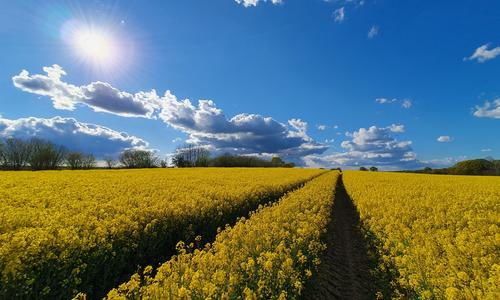Rapeseed stem weevil
- Beetles up to 4 mm in size, completely grey-black. First spring pest. Up to 150 eggs are laid individually below the shoot tips in small gnawed hollows. Substances excreted during this process cause growth disturbances, which can lead to S-shaped twists and bursting of the stems. The main damage is thus caused during egg laying.Larvae bore out in May/June and pupate in the ground. One generation/year.
CONTROL BENCHMARK
- Set up yellow traps early on the first warm days, often required as early as February
- Yellow traps on previous year's rapeseed areas indicate awakening after winter. Entry from there into the young stand
- Incoming flight is well detected by yellow traps. Always place a yellow trap in the direction of the previous year's rapeseed field.
- The control target is 5 beetles per yellow trap in 3 days. After exceeding the guideline value, treat quickly, as egg laying begins early after a short period of ripening damage.
- Eggs and larvae can no longer be controlled.
PREVENTION
- Spare the natural opponent. For example, certain species of ichneumon flies as nymph parasites. Predatory fly larvae still eat the larvae in burst stems. Ground beetles eat the larvae as they migrate to pupate in the soil.






